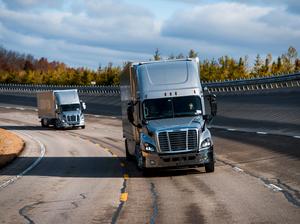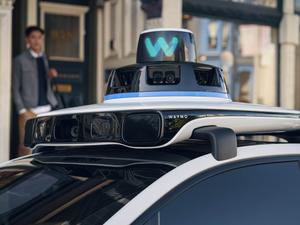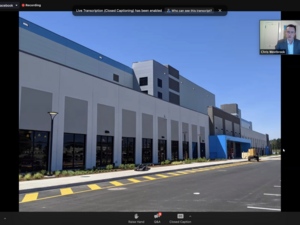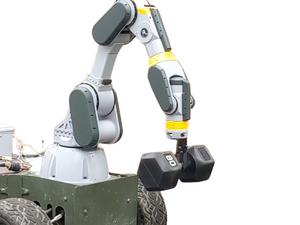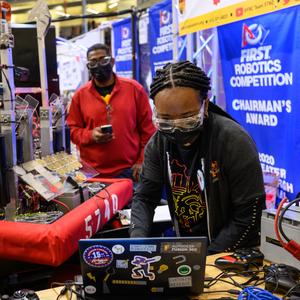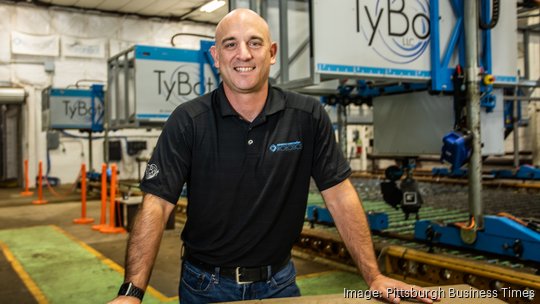
Jeremy Searock believes the world has already entered its next industrial revolution, and the work that he and his team are conducting at Advanced Construction Robotics Inc. is helping to pave the revolution forward. With the use of robotics and artificial intelligence, Searock’s company aims to solve the construction challenges of today with the technology of tomorrow. Its two products, the TyBot and IronBot, have been deployed to help with bridge and road construction projects around the nation, and it’s only a matter of time, Searock says, until every industry is incorporating robotics in some capacity.
What first led you into a career with robotics? My first introduction to robotics was as an undergraduate at the U.S. Naval Academy. My department was back then called systems engineering, but they actually changed their name to robotics and controls engineering, so back then, they were the robotics department, even though nobody had the name. They had robotics classes and pretty much everybody did a robot for their senior design project. I fundamentally found it fascinating for machines, or systems, or anything engineering that did stuff by itself. I can remember specific labs we did where we had a little device that basically followed a light around. It would always keep its focus on a piece of light, and it was just pretty cool. It looked so smart even though it was sort of a simple analog control system, not a robot, not AI, just simple feedback control systems, which has been around for a long time.
How do you interpret the current world of robotics, and where do you see it going? I think it’s pretty clear that the beginning of a new industrial revolution is happening. The models of industrial revolutions are that there’s the old way you did it, (then) there’s this new technology available. To use the example of the industrial revolution of the 1900s, there was the way you did it and then there was new technology, like combustion engines and electricity and electric motors and basically unlimited power supplies, and you took that new technology and did the exact same thing in a totally different way using that technology. That’s pretty much the model of how all the companies of the early industrial revolution started, and once that started, and some industries became successful at it, then every industry jumped on board and before you knew it, it was totally different. That model is happening now, and the new technology available is robotics and artificial intelligence. It sort of started with autonomous vehicles and we’re leading the way in construction, but the model is going to happen where the businesses of the 21th century are going to be totally disrupted and changed by adding robotics and artificial intelligence into the mix.
Have you noticed any overlaps between your military experience and the launching of your own business? One conceptual overlap is between entrepreneurship and military operations. When you’re trained as a military officer, which is sort of the leadership core of the military, you get a certain set of people, or a ship, or something that you’re put in charge of, and your job is to take direction from people thousands of miles away and accomplish the mission, but you are by yourself with your crew, or your squad, or whomever. You want to make decisions for the greater good or for the good of the country. And a lot of those instances is making decisions or making plans in the face of uncertainty. You don’t know what’s going to happen out in the field, or out at sea, and you’re in charge, and you need to make good decisions about what to do next to accomplish the greater mission.
What remains to be one of the biggest challenges in autonomous robotics? It’s exponentially more difficult to get an autonomous robot to work all the time, every day, in the right way. What does that mean? It’s a certain amount of work for it to work, I’m just saying 90% of the time, but to get that 10% of reliability out of it is very difficult, and the more complex of the application, the more difficult that 10% is. You can see that in the autonomous cars now where the autonomous car has to work correctly every time, or else it might crash and kill somebody. Getting that last 10% is difficult.
What makes for an effective leader? I think an effective leader is a servant leader. That’s a common professional leadership term where the goal of the leadership is to make decisions that serve their staff and their employees to make sure they have everything they need, when they need it, to be as efficient as possible and to resolve the conflicts or decisions that need to be made to keep marching your way down the path toward success.
How do you get away from technology? I really like the outdoors, so I like spending time in the woods. I really like hunting and fishing. Being in nature and seeing the woods come alive in the morning at sunrise is a way to just enjoy the natural beauty that God has made.
What is something you’re looking forward to 10 years from now? I look forward to 10 years from now we’ll look back and say we genuinely, as a team, worked a once-in-a-lifetime opportunity of bringing robots to construction job sites and boy, we did it and we provided new machines and new capabilities that really changed the industry. I’m really excited about changing an industry with this technology that if I was born 20 years later or 20 years earlier, it wouldn’t be possible. We just happened to be alive at the right time in my career to make this sort of difference in the world with this technology because it just happened to become mature at the right time.
Title: Co-founder, president and chief technology officer, Advanced Construction Robotics Inc.
Age: 40
First job: Library assistant
Education: B.S., systems engineering (robotics), U.S. Naval Academy; M.S., robotics, Carnegie Mellon University; nuclear engineering, Naval Nuclear Propulsion Program
Residence: Shaler Township
Family: Wife, Michelle; two boys, Joel, 12, and Evan, 9
Hobbies: Exploring the outdoors, fishing and hunting
Causes: “Supporting the missions of my church and faith.”

